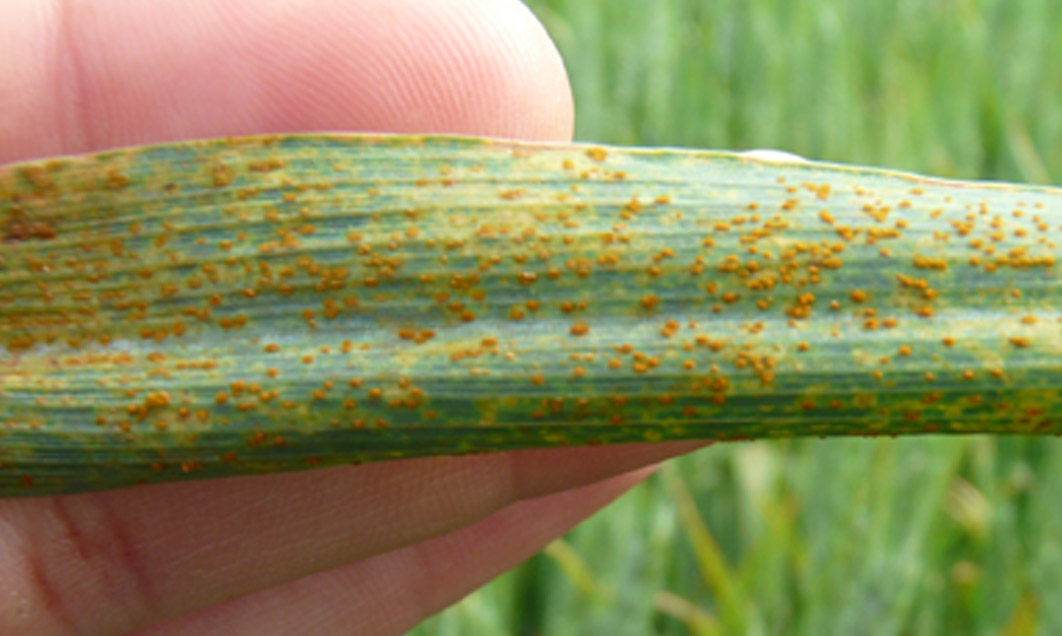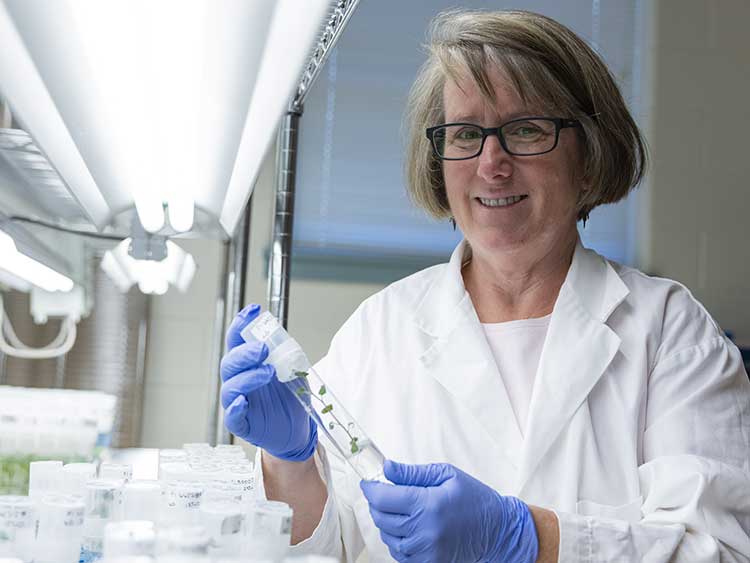University of Georgia Extension agents are often at the front lines when it comes to finding and defending crops from diseases and pests. Andrew Sawyer, an Extension agricultural and natural resources agent in Thomas County, made a timely discovery when he was the first to identify the presence of wheat rust in Georgia in 2013. His finding reduced yield losses on wheat, barley and rye.
“I was scouting to learn for my benefit, and I ended up finding the rust. I took it to the office on a Friday, put it on my microscope and sent it to Dr. (Alfredo) Martinez in Griffin on a Monday, and he said, ‘Yep that’s it,’” Sawyer said.
In an effort to learn more about wheat, Sawyer scouted two wheat fields on a weekly basis in Thomas County, which led to his discovery.
Wheat rust, which can be diagnosed by the small pustules about one-sixteenth inch in diameter with flaky red spores, causes a loss of $5 billion each year. The disease typically grows when temperatures are between 60 and 80 degrees. Unlike other diseases that overwinter in crop debris, rust has to be reintroduced each year.
Though unpreventable, wheat rust can be managed with a fungicide. Ideally, the fungicide should be sprayed on the wheat before the disease arrives, according to Sawyer, which is why communication that the disease is present is very important.
“Specialists and people talk across the state line,” Sawyer said. “When something is in Louisiana we know it’s there. When something moves through Florida, we know. But the real way you manage is to scout your fields — especially when you know the rust is getting close,” Sawyer said.
Farmers are also advised to plant several resistant cultivars to reduce the risk of the disease’s severity.
Wheat rust is detrimental to a crop because of its ability to spread and mutate. The disease becomes airborne and is carried from western states to eastern states. The disease can change the race of the species, which can cause varieties to lose their susceptibility.
Fungicide timing is critical. Rust’s impact can be felt from 5 percent infection to 50 percent infection in just three days' time.
Sawyer added that even if a grower sprayed his field, it is still likely that he would find some infected plants by the time he harvests his crop. However, it is vital that the crop is sprayed before the disease gets to the flag leaf (the last leaf of the wheat plant). The flag leaf supplies phtotosynthate to the grain, which is vital to grain development.
“On wheat, the flag leaf is a leaf that sits right under the head,” Sawyer said. “If rust gets on that leaf, the damage is much more significant.”
If the disease reaches the flag leaf, a 20 percent yield loss can occur.
For more information or questions about wheat rust, contact Sawyer at the Thomas County Extension office at caes.uga.edu/extension/thomas/contact.html.







